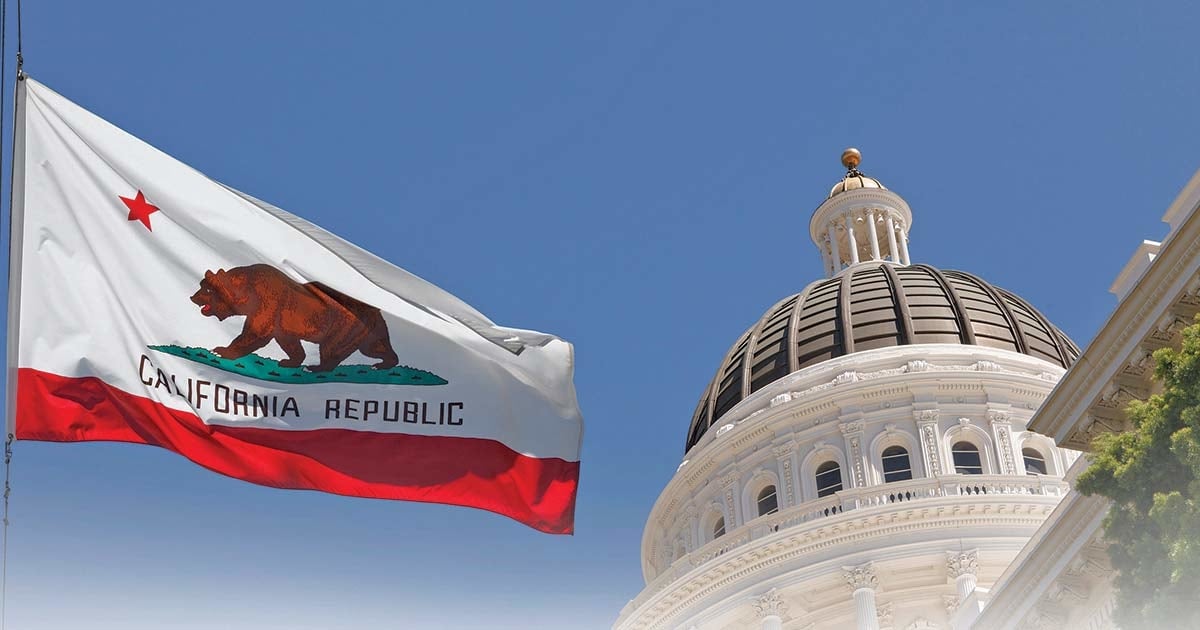
California auto dealerships have quickly reacted to comply with a new state guaranteed asset protection crackdown by cutting the price of the coverage and selling it less frequently on vehicles with smaller loans, data from Informed.IQ shows.
Assembly Bill 2311 became law in September and took effect Jan. 1, according to Informed.IQ. The bill bans sales of the on California car loans financing less than 70 percent of a vehicle’s value or more than the guaranteed asset protection, also known as GAP, would cover. It caps the price of the remaining permitted sales at 4 percent of the amount the borrower finances.
The average new-vehicle loan financed $41,445 during the fourth quarter of 2022, while the average used-vehicle loan involved $27,768, according to Experian.
Deals with loan- to-vehicle-value ratios above the loan-to-value ratio limit in the guaranteed asset protection policy would still be permitted if buyers are notified “in writing, acknowledged by the buyer,” the bill states.
The coverage pays any loan balance not reimbursed by traditional auto insurers, who are only obligated to cover the vehicle’s actual value, in the event of a total loss. Like other F&I products, it is often bundled and financed within auto loans rather than purchased separately.
Informed.IQ examined the 70 percent floor and 4 percent ceiling using data from about 5,000 vehicle contracts containing the protection from Jan. 1, 2022, through March 31, 2023.
“The results show a tremendously proactive industry adjustment to the new requirements,” states a blog post by Tom Oscherwitz, Informed.IQ legal and regulatory adviser vice president.
In February 2022, the month AB 2311 was introduced, 24 percent of vehicles with the protection saw the coverage cost more than 4 percent of the financed value. By September, 39 percent of covered vehicles saw the product cost more than the 4 percent threshold. The proportion of deals charging more than 4 percent for GAP stood at 40 percent or more for the rest of the year, reaching a peak of 46 percent in December.
“The percentages fell off a cliff starting January 1st of 2023,” Oscherwitz wrote.
Only 7.4 percent of deals including the protection exceeded the threshold that month. That fell to 2.2 percent in February and 2.1 percent in March.
“That’s just really remarkable,” Oscherwitz told Automotive News.
He said the degree to which contracts exceeded 4 percent also narrowed — for example, some coverage sold for at least 10 percent of the amount financed — after the law took effect.
“Even if there was a violation, the violations were much closer to what the law requires,” Oscherwitz said.
He said the speedy response “says a lot to the awareness of the industry of what’s going on.”
A similar “equally remarkable” trend can be observed in contracts covering vehicles financed at less than 70 percent of sticker, according to Oscherwitz.
In 2022, an average of 1.4 percent of cars with guaranteed asset protection coverage were protecting that small a loan. In January, only 0.11 percent of such deals were tied to loans below 70 percent of sticker — one-fourteenth of the 2022 average, Oscherwitz noted. By March, that amount was down to 0.07 percent.
It’s a mere handful of deals that are out of compliance, Oscherwitz said.
AB 2311 also requires buyers to sign off on a separate form notifying customers that F&I coverage and other add-on products are always optional. It gives consumers the right to cancel the coverage at any time without a fee. And the bill compels lenders to refund charges quickly when consumers cancel the protection or pay off their auto loans.
California dealers pivoted to 98 percent compliance quickly after the law change. However, a state might be unable to eradicate the behavior it targets.
Informed.IQ studied three other states that have had such limits on the books longer.
It found about 1.3 percent of their combined deals from March 2022 through March 2023 violated state laws.
Texas bans guaranteed asset protection that would cost consumers more than 5 percent of the amount financed, and Colorado won’t let dealers price the coverage above $300 or 2 percent of the amount financed, whichever is greater. Minnesota bans the sale of the protection on used vehicles worth $5,000 or less.
Informed.IQ checked more than 1,000 loans with the coverage from Colorado, more than 1,000 from Minnesota and more than 8,000 written in Texas during the March to March period.
In Texas, an average of 1.1 percent of deals were out of compliance compared with 1.9 percent in Minnesota and 2.5 percent in Colorado.
Viewed monthly, noncompliance in Texas ranged from a low of 0.6 percent in March 2022 to a high of 1.7 percent in January 2023.
Colorado saw full compliance in May and June 2022 but reached 4.6 percent noncompliance in September. Minnesota had many months of full compliance, but the state also experienced 6.5 percent of such deals in March 2023 violating the law.
“In contrast to the California waiver law, each of these waiver restrictions are long-standing requirements so dealers should [be] familiar with them,” Oscherwitz and senior data analyst Husain Radiowala wrote in an upcoming Informed.IQ blog post the company shared with Automotive News. “The results show that the vast majority of dealers have implemented checks to comply with these GAP waiver obligations. However, we also saw a persistent, non-trivial number of waiver contracts that did not conform to state legal requirements.”
Oscherwitz and Radiowala pointed out regulators could easily catch dealers with a similar analysis.
“From our perspective, dealers and lenders run risks if they do not implement automated checks to catch these loan defects,” they wrote in the draft post.
“Because these violations are numerically driven, regulators can spot them quickly during compliance reviews.”